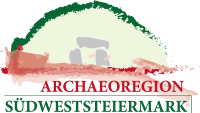Since its foundation in 1990, the Hallstatt Museum in Grossklein (haMUG) has been preserving, communicating and presenting the rich archaeological heritage of Grossklein and the surrounding area.
Special emphasis is placed on sound archaeological knowledge and high-quality museological presentation. In combination with the Hallstatt-period farmstead on the Burgstallkogel hill and the “Fürstengräber” hiking trail, the museum offers a unique and holistic experience of the historical cultural landscape of Grossklein. By offering Heriterra brand products, it has become a unique meeting place of the past and the future, of archaeology and tourism.
April 9 to November 4, Tuesday to Saturday 10 a.m. to 12 p.m. and 2 to 5 p.m.
Closed from December until the end of March.
Also open on public holidays and guided tours also possible at other times by appointment.
Contact:
A-8452 Großklein 9
T: +43 664 2714 414, museum@grossklein.gv.at
www.hamug.at, www.museum-grossklein.at
In view of the great importance of the prehistoric settlement on Burgstallkogel hill and the necropolis surrounding it, the “Hallstatt Museum Grossklein” was established in 1989 by the municipality and the tourist association of Grossklein with the support of the Department for Prehistory and Early History at the Landesmuseum Joanneum. To house the museum, the former “Hirtnerstall” barn was adapted. The opening took place in 1990, the last extension was made in 2003. In the course of the EU project “PalaeoDiversiStyria”, the museum was renovated and redesigned in 2019 in cooperation with the Joanneum Universal Museum.
It provides a historical overview of the region around Grossklein, spanning five and a half millennia – from the Neolithic period to the late Middle Ages, with a focus on the Hallstatt period. With the help of the residents, a new name was found for the museum: hamuG (Hallstatt Museum Grossklein).
In the entrance area, the new Heriterra room invites visitors to get informed about the products created from scientifically based results and their suppliers. Maps and directories show at which locations at which times which certain plants grew or were cultivated.
Room 1 features a redesigned media and hands-on area.
Visitors can learn about various archaeological, historical, botanical, and zoological topics through short films and selected literature, and can literally get in touch with tools from the Stone Age to the Iron Age.
Room 2 primarily houses finds from the Kleinklein princely graves and documents the excavations and historical background surrounding the Hallstatt period settlement on Burgstallkogel hill. A reconstructed barrow illustrates the topic of the largest Hallstatt necropolis in the eastern Alps.
Room 3 is a “showcase into the past:” finds and fragments from the Neolithic period, the earlier Hallstatt period, such as the loom weights of the largest vertical loom in Central Europe, as well as exhibits from the early Celtic period, the Roman period and the early Middle Ages are presented here. The presentation of a Roman villa and the documentation of iron smelting complete the museum’s offer.
Authentically reconstructed tools from the Stone, Bronze and Iron Ages as well as varying special exhibitions are presented in the attic. The canopied outdoor area of the museum invites visitors to sit and have a break but it is also a place for creative work and design. Finally, there is a small museum shop with selected literature, bronze works, pottery etc.
Text: Dr. Marko Mele

